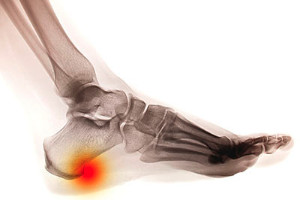Connect With Us
Blog
Items filtered by date: August 2023
Negative Pressure Wound Therapy

Diabetes is a condition that affects how sugar in the blood is controlled. Those with the condition are at a greater risk of developing wounds on their feet because of nerve and vein damage. These can be painful and take a long time to heal. If left untreated, they can lead to amputation of the foot or leg. Negative pressure wound therapy, or NPWT, is a method where a special dressing is put on the wound, and a machine sucks out any fluid from the wound. This method is used to help wounds heal faster, but it is more expensive than regular wound dressings. Studies on this method have shown that while this is a beneficial treatment, it may not be better than traditional foot wound treatment, and more research is needed. Diabetes is a serious condition, and if you are suffering from this disease and have foot problems, including wounds on your feet, it is strongly suggested that you make an appointment with a podiatrist for an accurate diagnosis and treatment.
Wound care is an important part in dealing with diabetes. If you have diabetes and a foot wound or would like more information about wound care for diabetics, consult with one of our podiatrists from Foot & Ankle Surgical Group. Our doctors will assess your condition and provide you with quality foot and ankle treatment.
What Is Wound Care?
Wound care is the practice of taking proper care of a wound. This can range from the smallest to the largest of wounds. While everyone can benefit from proper wound care, it is much more important for diabetics. Diabetics often suffer from poor blood circulation which causes wounds to heal much slower than they would in a non-diabetic.
What Is the Importance of Wound Care?
While it may not seem apparent with small ulcers on the foot, for diabetics, any size ulcer can become infected. Diabetics often also suffer from neuropathy, or nerve loss. This means they might not even feel when they have an ulcer on their foot. If the wound becomes severely infected, amputation may be necessary. Therefore, it is of the upmost importance to properly care for any and all foot wounds.
How to Care for Wounds
The best way to care for foot wounds is to prevent them. For diabetics, this means daily inspections of the feet for any signs of abnormalities or ulcers. It is also recommended to see a podiatrist several times a year for a foot inspection. If you do have an ulcer, run the wound under water to clear dirt from the wound; then apply antibiotic ointment to the wound and cover with a bandage. Bandages should be changed daily and keeping pressure off the wound is smart. It is advised to see a podiatrist, who can keep an eye on it.
If you have any questions, please feel free to contact our office located in Henderson, NV . We offer the newest diagnostic and treatment technologies for all your foot care needs.
Causes of Swollen Ankles After Running

Swollen ankles after running can be a concerning and uncomfortable issue that many athletes and runners experience. While it's essential to push your limits and stay active, it's equally important to recognize the potential causes of this discomfort. One common cause of swollen ankles after running is improper footwear. Ill-fitting shoes or those lacking proper support can lead to strain on the ankles, resulting in inflammation. Overuse and overtraining can also contribute to swelling. Pushing yourself too hard or abruptly increasing your running intensity can cause stress on the ankle joints and surrounding tissues, leading to swelling. Further, inadequate warm-up and cool-down routines can lead to muscle tightness and cause fluid to accumulate around the ankles. Proper running shoes, a gradual training progression, and thorough warm-up and cool-down routines can significantly reduce the risk of swollen ankles. If swelling in the ankles persists or worsens, it is suggested that you make an appointment with a podiatrist to rule out underlying issues like sprains, strains, or ligament damage.
Ankle pain can have many different causes and the pain may potentially be serious. If you have ankle pain, consult with one of our podiatrists from Foot & Ankle Surgical Group. Our doctors will assess your condition and provide you with quality foot and ankle treatment.
Ankle pain is any condition that causes pain in the ankle. Due to the fact that the ankle consists of tendons, muscles, bones, and ligaments, ankle pain can come from a number of different conditions.
Causes
The most common causes of ankle pain include:
- Types of arthritis (rheumatoid, osteoarthritis, and gout)
- Ankle sprains
- Broken ankles
- Achilles tendinitis
- Achilles tendon rupture
- Stress fractures
- Tarsal tunnel syndrome
- Plantar fasciitis
Symptoms
Symptoms of ankle injury vary based upon the condition. Pain may include general pain and discomfort, swelling, aching, redness, bruising, burning or stabbing sensations, and/or loss of sensation.
Diagnosis
Due to the wide variety of potential causes of ankle pain, podiatrists will utilize a number of different methods to properly diagnose ankle pain. This can include asking for personal and family medical histories and of any recent injuries. Further diagnosis may include sensation tests, a physical examination, and potentially x-rays or other imaging tests.
Treatment
Just as the range of causes varies widely, so do treatments. Some more common treatments are rest, ice packs, keeping pressure off the foot, orthotics and braces, medication for inflammation and pain, and surgery.
If you have any questions, please feel free to contact our office located in Henderson, NV . We offer the newest diagnostic and treatment technologies for all your foot care needs.
Why Would My Heel Feel Numb?

Numerous factors can cause heel numbness. Common causes can include sitting with crossed legs or wearing tight shoes. Some cases may have more serious origins, such as diabetes, hypothyroidism, lupus, nerve compression, or an infection. Numbness may lead to difficulty in sensing touch, temperature, or it may be difficult to balance while walking. Additional symptoms can include tingling, weakness, and sometimes pain or swelling. Seeking medical attention is important, especially if numbness is severe or if it accompanies other symptoms that can include stroke indicators. Treatment depends on the underlying cause and may involve medication or alternative therapies. If simple fixes do not alleviate the numbness, it is strongly suggested that you consult a podiatrist for proper diagnosis and treatment.
Many people suffer from bouts of heel pain. For more information, contact one of our podiatrists of Foot & Ankle Surgical Group. Our doctors can provide the care you need to keep you pain-free and on your feet.
Causes of Heel Pain
Heel pain is often associated with plantar fasciitis. The plantar fascia is a band of tissues that extends along the bottom of the foot. A rip or tear in this ligament can cause inflammation of the tissue.
Achilles tendonitis is another cause of heel pain. Inflammation of the Achilles tendon will cause pain from fractures and muscle tearing. Lack of flexibility is also another symptom.
Heel spurs are another cause of pain. When the tissues of the plantar fascia undergo a great deal of stress, it can lead to ligament separation from the heel bone, causing heel spurs.
Why Might Heel Pain Occur?
- Wearing ill-fitting shoes
- Wearing non-supportive shoes
- Weight change
- Excessive running
Treatments
Heel pain should be treated as soon as possible for immediate results. Keeping your feet in a stress-free environment will help. If you suffer from Achilles tendonitis or plantar fasciitis, applying ice will reduce the swelling. Stretching before an exercise like running will help the muscles. Using all these tips will help make heel pain a condition of the past.
If you have any questions please contact our office located in Henderson, NV . We offer the newest diagnostic and treatment technologies for all your foot and ankle needs.
Foot Conditions May Happen From Wearing Flip-Flops
 Wearing flip-flops is a popular thing to do in the summer months. They are easy to wear and come in many different materials and colors. Ideally, they are meant to be worn to the beach and pool areas, however, many people enjoy their simplicity and choose to wear them while accomplishing daily tasks. When flip flops are frequently worn, the walking style or gait may change as the foot muscles adapt to ensure the shoe is comfortable. Blisters may form, toenail fungus and athletes’ foot may develop, and heel pain may ensue. There is generally minimal padding on the heels of flip flops, and ongoing heel pain may indicate plantar fasciitis or that a heel spur has occurred. Additionally, hammertoe may develop as the toes continuously scrunch together to keep the shoe on the foot. Cracked heels are another condition that can happen from wearing shoes that do not have a back, and it is helpful to moisturize the feet more often when these types of shoes are worn. If you have concerns about wearing flip-flops, it is suggested that you confer with a podiatrist who can answer any questions you may have.
Wearing flip-flops is a popular thing to do in the summer months. They are easy to wear and come in many different materials and colors. Ideally, they are meant to be worn to the beach and pool areas, however, many people enjoy their simplicity and choose to wear them while accomplishing daily tasks. When flip flops are frequently worn, the walking style or gait may change as the foot muscles adapt to ensure the shoe is comfortable. Blisters may form, toenail fungus and athletes’ foot may develop, and heel pain may ensue. There is generally minimal padding on the heels of flip flops, and ongoing heel pain may indicate plantar fasciitis or that a heel spur has occurred. Additionally, hammertoe may develop as the toes continuously scrunch together to keep the shoe on the foot. Cracked heels are another condition that can happen from wearing shoes that do not have a back, and it is helpful to moisturize the feet more often when these types of shoes are worn. If you have concerns about wearing flip-flops, it is suggested that you confer with a podiatrist who can answer any questions you may have.
Flip-flops are not always the best choice of footwear. If you have any concerns about your feet or ankles, contact one of our podiatrists from Foot & Ankle Surgical Group. Our doctors will assist you with all of your foot and ankle needs.
Flip-Flops and Feet
When the weather starts warming up, people enjoy wearing flip-flops. Flip-flops are comfortable, stylish, and easy to slip on and off; they're perfect for any summer beach goer. However, these shoes can cause harm to the feet.
How Can Flip-Flops Affect Me Long-Term?
- Ankle problems
- Hip problems
- Lower back problems
- Pain in the balls of the feet
- Problems with foot arches
- Changes in the way you walk
Are There Injuries Associated with Flip-Flops?
Yes. Since flip-flops are relatively weak and do not provide the same amount of support as sneakers, people who wear flip-flops regularly are more susceptible to injuries. On top of that, the open nature of the shoe makes your feet more prone to other problems, such as cuts and even infections. Common injuries and ailments include:
- Sprained ankles
- Blisters
- Infections
- Cuts and Scrapes
I like Wearing Flip-Flops. Are There Safe Alternatives?
When buying flip-flops, try to find ones that have sturdy soles and that are made of high-quality materials that will support for your feet. These flip-flops will cost more but will also last longer as a result.
If you have any questions please feel free to contact our office located in Henderson, NV . We offer the newest diagnostic and treatment technologies for all your foot and ankle needs.
Are You Suffering From Nerve Damage?
Definition and Causes of Heel Spurs

Many people think there is a mystery behind what heel spurs are and why they develop. Heel spurs form when our feet endure repeated stress and strain. A heel spur is defined as a small bone that protrudes from the underside of the heel. As we grow, our bones may develop bony growths that can be common around the heels. These growths are referred to as heel spurs and can be uncomfortable. Heel spurs seem to present as a warning sign the body provides to reduce excessive pressure on the heel. Activities such as running, dancing, or even wearing unsupportive shoes can contribute to the development of a heel spur. Certain factors can increase their likelihood, such as being overweight or having abnormal walking patterns. It is beneficial to be proactive in preventing heel spurs. Effective methods can include wearing supportive shoes and practicing proper foot stretching. If you have pain in your heel, it is suggested that you visit a podiatrist who can diagnose and treat heel spurs.
Heel spurs can be incredibly painful and sometimes may make you unable to participate in physical activities. To get medical care for your heel spurs, contact one of our podiatrists from Foot & Ankle Surgical Group. Our doctors will do everything possible to treat your condition.
Heels Spurs
Heel spurs are formed by calcium deposits on the back of the foot where the heel is. This can also be caused by small fragments of bone breaking off one section of the foot, attaching onto the back of the foot. Heel spurs can also be bone growth on the back of the foot and may grow in the direction of the arch of the foot.
Older individuals usually suffer from heel spurs and pain sometimes intensifies with age. One of the main condition's spurs are related to is plantar fasciitis.
Pain
The pain associated with spurs is often because of weight placed on the feet. When someone is walking, their entire weight is concentrated on the feet. Bone spurs then have the tendency to affect other bones and tissues around the foot. As the pain continues, the feet will become tender and sensitive over time.
Treatments
There are many ways to treat heel spurs. If one is suffering from heel spurs in conjunction with pain, there are several methods for healing. Medication, surgery, and herbal care are some options.
If you have any questions feel free to contact our office located in Henderson, NV . We offer the latest in diagnostic and treatment technology to meet your needs.

